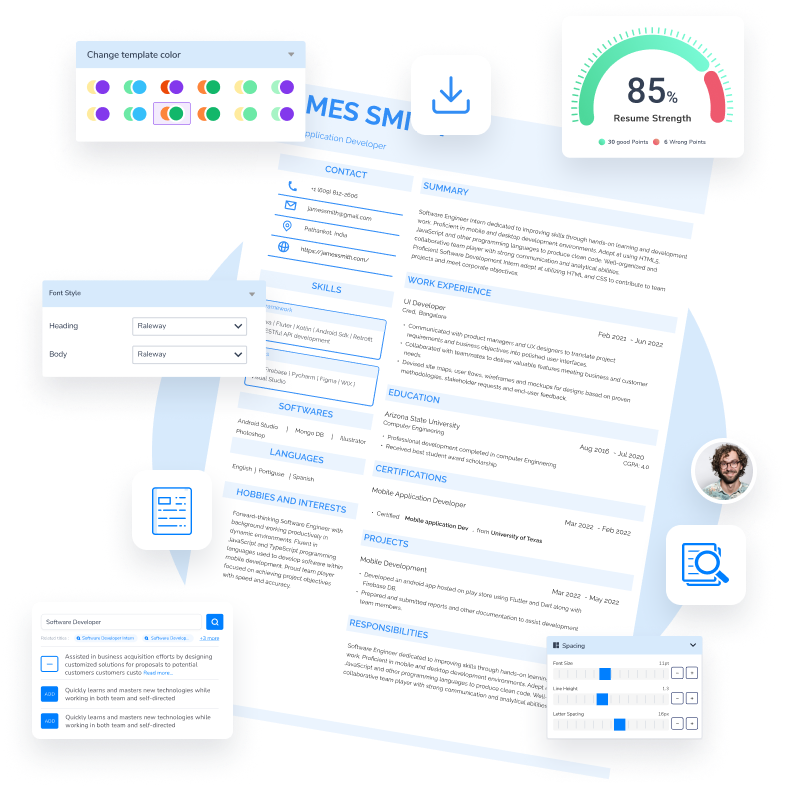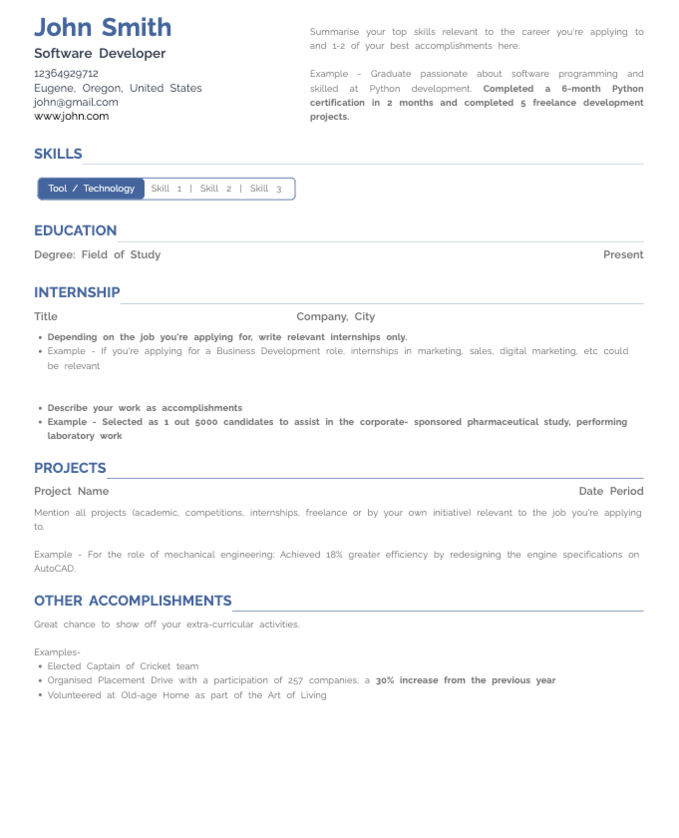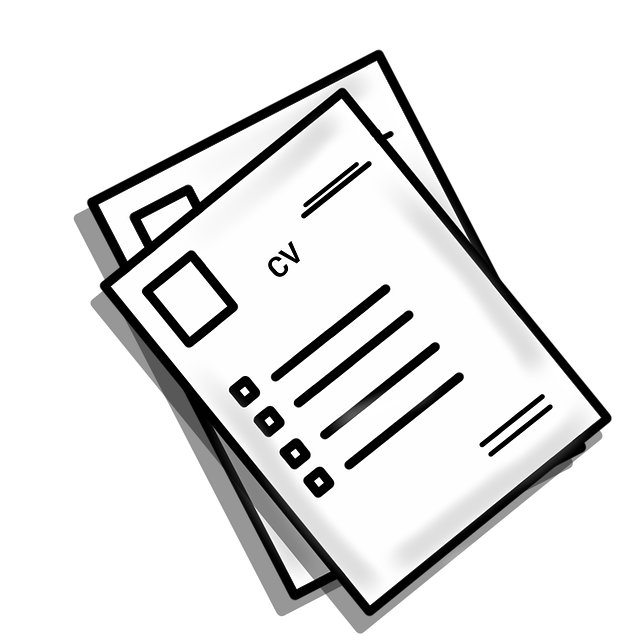How To Make College Resume: 21+ Tips And Tricks For 2023 With Examples | HyreSnap
3 min read

Having a resume is essential in today's competitive job market, where employers receive a large volume of applications for every job opening.
These statistics underline the importance of having a well-crafted resume. HR managers dismiss resumes with typos (61%), and recruiters only spend 7.4 seconds reviewing resumes.
Resumes with a clear visual hierarchy are more likely to be read (TheLadders study). Not including a cover letter with a resume is a mistake that would lead 37% of employers to dismiss an application (CareerBuilder survey).
Additionally, including a skills section on your resume can increase your chances of getting an interview by up to 59% (TalentWorks survey).
Therefore, it is crucial to create a polished resume that showcases your skills, experience, and achievements while being free of errors and including a cover letter and skills section.
A well-crafted resume can set you apart from other candidates and increase your chances of landing an interview.
Therefore it’s a necessity to have a professional resume to get through screening test and crack the interviews. HyreSnap Resume builder will make your job easy with its super AI technology, you can make ATS (Application tracking system) friendly resumes.
Do you wonder how you can create a job winning college resume? Do not worry? We will cover everything you need including:
What Is College Resume?
Importance of College Resume?
Steps to make professional college resume?
A college resume is a concise document that showcases your academic achievements, extracurricular activities, work experience, and other relevant information to potential employers, admissions officers, or scholarship committees.
It is a valuable tool for demonstrating your skills, abilities, and accomplishments in a clear and professional manner.
Creating a college resume can be a daunting task, especially if you are new to the job search or admissions process.
However, with careful planning and attention to detail, you can create a compelling document that highlights your strengths and makes a strong impression on those who review it.
In this blog, we will guide you through the process of creating a winning college resume, including what to include, how to format it, and tips for standing out from the crowd.
Your resume should be easy to read and navigate. Choose a clear and concise format that emphasizes the most important information, such as your education, work experience, and relevant skills.
Use bullet points and headings to break up the content and make it more visually appealing.
Your education is often the most important part of your resume, especially if you are a recent graduate or current student. Include your school name, degree, major, GPA (if it's above 3.0), and any academic awards or honors you have received.
If you have completed relevant coursework or participated in research projects, be sure to include that information as well.
Employers and admissions officers want to see evidence of your skills and accomplishments in a professional setting.
Include your work experience, starting with your most recent job or internship. List your job title, company name, dates of employment, and a brief description of your responsibilities and achievements.
In addition to your education and work experience, highlight your relevant skills and achievements.
This could include proficiency in specific software or programming languages, leadership experience, volunteer work, or participation in extracurricular activities.
Be specific and provide examples of how you have used these skills to accomplish specific goals.
Customize your resume for each job or program you apply to. Use keywords and phrases from the job description or program requirements to demonstrate that you have the skills and experience they are looking for.
Highlight the most relevant information and adjust the format or emphasis as needed.
Make sure your resume is free of errors and typos. Ask a friend, family member, or career counsellor to review it and provide feedback. Make any necessary revisions and ensure that the final document is polished and professional.
If you are a recent college graduate, you should use the following sample template:
[Full name]
[Residential address]
[Phone number]
[Email address]
[Link to portfolio] (optional)
Career objective
[Two or three sentences describing your accomplishments and professional goals]
Education
[Course or degree completed] [Year of completion]
[Name of college] [Marks secured]
Experience
[Name of employer]
[Position held] [Date of employment]
[Use bullet points to mention three or four duties and job responsibilities]
Skills
[Technical skills]
[Skill 1]
[Skill 2]
[Skill 3]
[Soft skills]
[Skill 1]
[Skill 2]
[Skill 3]
Awards and achievements
[Use bullet points to highlight two to four of your most recent and noteworthy accomplishments and honours]
Hobbies and interests (optional)
[Include two to four interests and hobbies in bullet points]
When developing a college resume, remember these pointers:
When detailing your experiences, accolades, and accomplishments, pay special attention to the use of action verbs and active words such as organized, detail-oriented, trained, and motivated. Your resume is easier to read as a result.
While a potential employer expects to see pertinent information on your CV, try to keep it concise. College students should often use a one-page student resume.
Hiring managers can then examine your most relevant and latest educational background, work experience, and accomplishments.
An engineering graduate with little to no professional experience might utilize an engineering resume for freshers as a professional document to demonstrate their abilities and qualifications for a position.
You might find it advantageous to rearrange the parts of your resume as a recent engineering graduate in order to highlight your education, internships, and training.
When trying to land your first professional chance, your resume is a crucial component of your employment application.
A one-page resume is sufficient: When there are job opportunities, employers frequently accept a large number of resumes, and they may not have much time to study lengthy resumes. It's best to make your resume clear and succinct.
Use typefaces that are compatible: If you want maximum compatibility, use Unicode fonts since not every font is compatible with every computer, piece of software, or web browser. The English Unicode fonts Arial, Tahoma, and Times New Roman are some examples.
Observe the clear structure: When applying for engineering positions, avoid including photographs, charts, graphics, or borders in your document.
For each section, create headings: Your resume will often be easier to read and seem impressive with clear and straightforward formatting. Make a heading on each part as you write it to make it easier to understand.
Use the space you have wisely: To maximize white space in the document, stay away from borders and maintain standard or thin page margins. The default margins in the page layout choice provide a suitable margin if you are printing on A4 paper.
Making a college resume that wins you job could be difficult without any strong assistance.
As a result, we advise using the HyreSnap Resume Builder to create your resume for your upcoming job search. It is a resume-building software powered by AI that can create incredibly impressive and technically sound resumes in a matter of minutes.
When utilizing HyreSnap Resume Builder, you'll notice some of the features listed below:
You can use all of these suggestions to frame an effective college resume. However, if you're having trouble, you may write your resume in 2023 with the HyreSnap AI Resume Builder.
Additionally, you can contact our specialists at contact@hyresnap.com with any questions you may have regarding your career. We owe it to you to assist you in building a successful career in this period of intense competition.

Try Now for Free!




